Answer these simple questions and we will find you the BEST prices
Which type of solar quotes do you need?
It only takes 30 seconds
100% free with no obligation

Get up to 4 quotes by filling in only 1 quick form

Install a heat pump for less with the BUS grant

We’ve helped over 500,000 homeowners reduce their carbon footprint
- GreenMatch
- Blog
- How to Keep Your House Cool
How to Keep Your House Cool

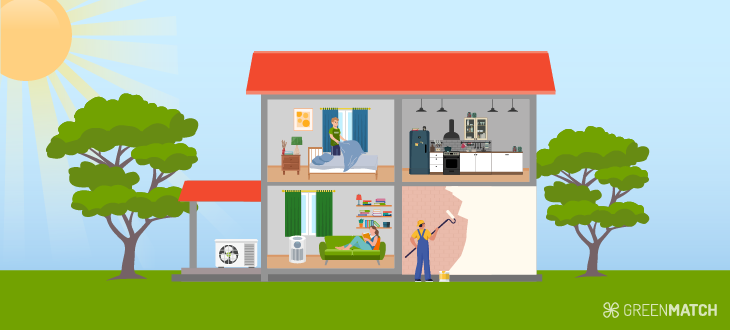
As the weather gets warmer, keeping your home cool becomes increasingly important. Not only does it provide comfort, but it can be crucial for our health and well-being. With increased energy costs, however, looking for ways to reduce temperatures without spending a fortune can be difficult.
We've spoken to the experts to help us in our quest to cool down. From window hacks to energy-saving tips, we’ve compiled a list of all the best techniques to keep your home cool.
So, whether you're a homeowner or a renter, keep reading to learn how to beat the heat this summer (without harming your bank balance!).
1. Fans and air conditioning
Keeping your home cool during hot weather can be challenging, especially if you don't have air conditioning. However, several ways exist to stay cool and comfortable without too much energy. One of the easiest ways is to use fans strategically.
Fans are not designed to chill the air but can circulate it and create a cool breeze. If you don't have air conditioning, fans are your best friend if you use them correctly.
Mark Joseph, the founder of Parental Queries, says:
Another tactic I implemented was placing fans strategically around the house. Instead of leaving them on all day or pointing them directly at me, I used them to push hot air out of the room. By doing this, I was able to reduce the amount of heat in my house and also circulate cool air throughout. I could also reduce my electricity by only using the fans when necessary.
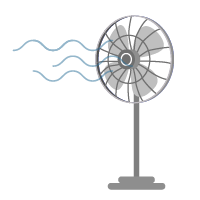
To create a cross-breeze, open windows at opposite sides of the house or room and keep doors open so the air can move freely. To cool down a room with a fan, place a deep dish of ice before it to create a water mist, adding a nice chill to the breeze.
Another way to improvise air conditioning is by hanging a wet sheet in front of an open window. This cools the warm air entering your home and is a great way to cool down a room without a fan.
If you have some extra money, you could purchase a portable air conditioner. However, look for models with high energy efficiency ratings to keep your energy bills low. These can cool down the rooms you use most often and make your home more comfortable.
2. Check the heating is turned off
It might seem very obvious, but if you have automatic timers, you may run your central heating without realising it. This can lead to high energy costs and a much more uncomfortable home!
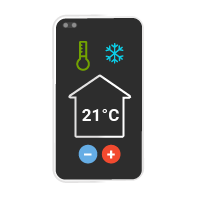
3. Programmable thermostat
If you're looking for a way to regulate the temperature in your home while also saving money, a programmable thermostat is an excellent option. Adjusting the temperature according to your schedule can reduce your energy usage and lower your bills. For example, you can program the thermostat to increase the temperature during the day when you're away from home and lower it before you return.
4. Energy efficient appliances
Using energy-efficient appliances is an excellent option to keep your home cool without consuming excessive energy. When shopping for new appliances, such as fans or air conditioners, consider purchasing models that are designed to be energy-efficient. This way, they consume less energy while helping to keep your home cool.
5. Blinds and curtains
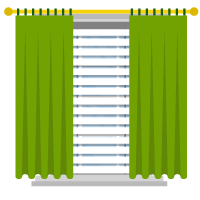
One popular method to keep heat out is to close your blinds or curtains during the day. This will ensure any additional heat from the sun’s rays doesn’t add more heat to your home. Doing this in the hottest part of the day is recommended, usually between 10 am - 4 pm.
Trying different types of curtains can also be useful, as lighter colours and thicker fabrics can have varying degrees of success at cooling different rooms in your home, depending on the sun's position.
If you choose to use blackout or thick curtains, these can also be beneficial in blocking any gaps or cracks around the windows. This will, therefore, prevent any cool air from escaping.
When your rooms are naturally cooler during the day, you may not need to run your fans or air conditioners as often, saving you extra on energy bills.
6. Insulation
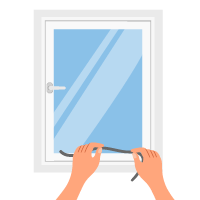
The best way to prevent any cool air from escaping or letting more hot air inside is to check that your home is well insulated.
Sealing gaps or cracks around windows and doors can help keep your home cooler. It also reduces the need for you to spend money running fans.
Weatherstripping is an excellent way to prevent cool air from escaping via windows and doors. You can put weather stripping around a door in less than 30 minutes, and it's quite affordable and quick to do so.
Insulation also helps regulate the temperature by preventing heat transfer from outside to inside and vice versa. A well-insulated house can significantly reduce the heat that enters during the day and retain coolness at night.
Insulation materials such as fibreglass, cellulose, and foam can help you save on your energy bills and reduce your carbon footprint. Keeping your doors tightly sealed and eliminating drafts with caulk, sealant, or weather stripping will also help keep your home cooler.
7. External shading
Another effective way to keep your home cool is by adding shading to the outside of your property. This can include installing an awning, planting trees or shrubs or other structures such as a pergola.
When planting trees, it is essential to consider the sun's direction. Planting trees on your home's south and west sides can reduce solar heat gain in the summer while allowing sunlight to pass through in the winter when the trees lose their leaves. This is a cost-effective and environmentally friendly way to keep your home. This can also add aesthetic value to your property.
In addition to planting trees, installing awnings or pergolas can help provide shade and reduce heat gain. Awnings and pergolas come in various sizes and styles and can be customised to fit your home's architecture. They provide shade for your windows, walls, and roof, keeping the sun's rays from entering your home. This can significantly reduce the need for air conditioning and save you money on energy bills.
8. Landscaping
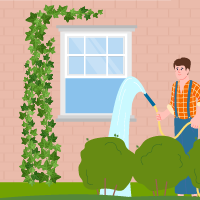
In addition to planting trees, you might want to consider other landscaping ideas, such as planting climbing ivy or vines. Climbing plants can grow to cover the exterior of your walls, acting as an absorbent shield for heat rays.
Not only can these plants provide a cooling indoor environment, but they can add a unique aesthetic to your home as well. However, It is worth considering that ivy needs to be well maintained, so be sure to look thoroughly into your options before choosing this solution.
9. Keep windows closed
This is a vital tip that comes up time and time again. Keeping your windows closed during the hottest times of the day can significantly reduce your home's temperature.
Expert advice recommends keeping those windows closed if the temperature outside is hotter than inside. This avoids any outside heat getting in. However, once the sun goes down and the temperatures outside start to drop, you can crack open the windows once more and get a fresh flow of air through your home.
For those with sash windows, it's important to ensure that the top and bottom are open equally. The Victorians designed these windows so that cool air comes in through the lower opening, and warm air is pushed out through the top. By keeping both the top and bottom open, you can create a natural flow of air that will help keep your home cool and comfortable.
10. Turn off unnecessary lights
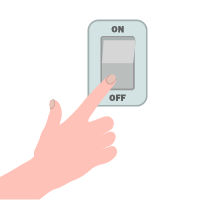
Turning off all unnecessary lights and appliances can help with temperature reduction, as they can generate heat. One way to combat this issue is to consider using LED lighting instead.
Traditional incandescent bulbs are highly inefficient and give off up to 90% of their energy as heat. On the other hand, LED bulbs convert 90% of the energy to light, making them a much cooler option in the heat. They also use much less energy overall, making them a cost-effective solution in the long run.
11. Natural ventilation
Natural ventilation is a simple and effective way to keep your home cool during warm weather. Leaving windows and doors open during the cooler parts of the day allows fresh air to circulate throughout your home.
To effectively use natural ventilation, it's important to open windows and doors in the early morning or late evening when the outside air is cooler. Cross-ventilation can also be used by opening windows on opposite sides of your house to create a refreshing breeze. However, it's important to remember to close windows and curtains during the warmest part of the day to prevent heat from entering your home.
12. Manage humidity
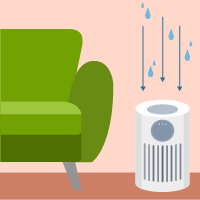
The humidity may make the summer heat seem even worse if you live in a humid region. To combat this, you might use a dehumidifier to reduce the sticky atmosphere.
Humidity adds moisture to the air, slowing down the pace at which we perspire. This makes us feel much hotter. Investing in a dehumidifier can take this moisture out of the air and make the environment much more comfortable.
If you want to save money on a new appliance, indoor plants are also a great way to tackle this problem.
13. Using indoor plants
Indoor plants can offer a range of benefits, particularly during hotter months. They can help us feel cooler by acting as natural dehumidifiers.
Plants such as English ivy, peace lily, and Boston Ferns will naturally absorb this extra humidity and make the air feel much fresher.
They can help with moisture, and plants will naturally add more oxygen to your home and, in some cases, a pleasant scent. This can all add up to make your indoor environment much more healthy and comfortable.
14. Keeping cool at night
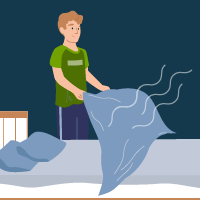
When the temperature rises at night, getting a good night's sleep can be challenging. One way to help overcome this is to put your pillowcase or sheets in the freezer before bedtime. This can give you a refreshing and cool sensation when you sleep.
Another option is to fill a hot water bottle with cold water and place it in the freezer for an hour before bedtime. If you don't have a hot water bottle, you can also use a cool, damp cloth on your forehead and neck to cool down.
In addition to cooling your pillowcase or bedding, it's important to wear lightweight and breathable clothing when sleeping. This can help regulate your body temperature and prevent overheating. You can also use cool bedding made from natural fibres like cotton or linen, which are breathable and can help keep you cool and comfortable throughout the night.
Running your wrists under cold water before bedtime can also help cool down your body quickly. It's a simple and quick trick you can do when brushing your teeth or getting ready for bed. Plus, if you have a frozen hot water bottle, you can place it under your feet or in your bed to keep cool and regulate your temperature as you drift off.
15. Consider a heat pump
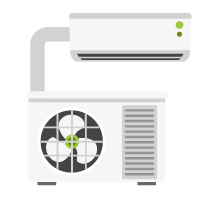
An air-to-air heat pump is a versatile and efficient system that can help you keep your home cool in the summer. It transfers heat from indoor to outdoor air, effectively cooling your home.
Unlike traditional air conditioners that consume much energy, air-to-air heat pumps use significantly less energy, making them an eco-friendly and cost-effective cooling option.
During the summer, an air-to-air heat pump can provide consistent and comfortable cooling to your home, regardless of the outside temperature. This is because the system doesn't rely on cool air from the outside; instead, it extracts heat from the indoor air, effectively lowering the temperature. The process is reversed during winter, allowing the heat pump to provide warmth to your home.
An air-to-air heat pump also helps to improve indoor air quality by filtering out dust, pollen, and other airborne particles, which can contribute to allergies and respiratory issues. The system can also dehumidify your home, removing excess moisture from the air and reducing the risk of mould growth.
Learn how you could benefit by checking the air to air heat pump costs.
16. Avoid heat-generating appliances
Appliances such as ovens, stoves, and dryers should be avoided during high temperatures. While avoiding other appliances, such as dishwashers and washing machines, may be challenging, consider running them later in the evening when the temperature is cooler.
However, if it's incredibly hot outside, you can take advantage of the heat by using your clothesline instead of the dryer. This will help reduce the humidity levels in your home, making it more comfortable. Additionally, you can take advantage of the weather and cook outside or have a picnic. These simple techniques will help you avoid using heat-generating appliances and keep your home cooler during the hottest parts of the day.
17. Optimise the use of windows

When keeping your home cool during the summer, your windows can play a big role. Installing energy-efficient windows is a great way to minimise heat transfer and maintain a comfortable indoor temperature. Double or triple glazing can help keep your home even cooler, but if your budget prevents you from replacing older windows, consider using window film that can act as an additional barrier against the elements without affecting the appearance of your windows.
Reflective window film is a great option for preventing heat from entering your home. This window film won't absorb sunlight but reflects it, keeping your home cooler. You can apply reflective film fairly quickly and cheaply, making it a great solution for those looking for an alternative to new windows.
18. Roofing materials
Using light-coloured or reflective roofing materials can effectively keep your home cool and reduce energy costs. By reflecting heat away from your house, these roofing materials can help prevent the sun's rays from being absorbed into your roof and warming up the inside of your home.
Light-coloured roofs are particularly effective in reducing heat absorption, as they reflect more sunlight than darker roofs. This can make a big difference in regions where temperatures regularly soar in summer. On the other hand, Reflective roofing materials are specifically designed to reflect sunlight and prevent heat from being absorbed.
19. Paint your house
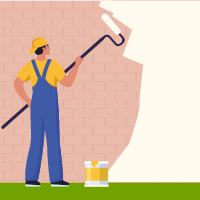
To help keep your home naturally cooler, choosing the right exterior materials can make a big difference. Light-coloured walls can reflect more sunlight and absorb less heat, which can help keep your home cooler during hot summer days.
Darker paint colours naturally absorb more heat from the sun, which can increase the temperature inside your home and lead to higher cooling bills over time. So, if you're planning to repaint your home's exterior, opting for a lighter colour can give your home a fresh look and help keep it cooler and more energy-efficient during the summer months.
20. Close doors
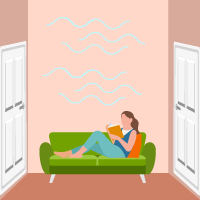
If you spend most of your time in one space, try closing the doors to rooms you don't use as often, such as bedrooms or restrooms. Closing off areas of the home concentrates colder air in a single location, which can help your main rooms stay cooler for longer.
21. Use natural fabrics
You can promote better air circulation and maintain a cooler environment by choosing breathable materials like cotton and linen for curtains and bedding.
Lighter materials can make a dramatic difference to the temperature of a room, especially when used to cover windows.
22. Seeking support
If you need additional support to keep your home cool, you may be entitled to help through local charities and government services. If you live in social housing or need additional care for elderly family members, there are services you can contact.
The official government website has useful links and information to help you find support, depending on your circumstances.

Becky is an experienced SEO content writer specialising in sustainability and renewable trends. Her background in broadcast journalism inspires reliable content to help readers live more sustainably every day.
We strive to connect our customers with the right product and supplier. Would you like to be part of GreenMatch?

